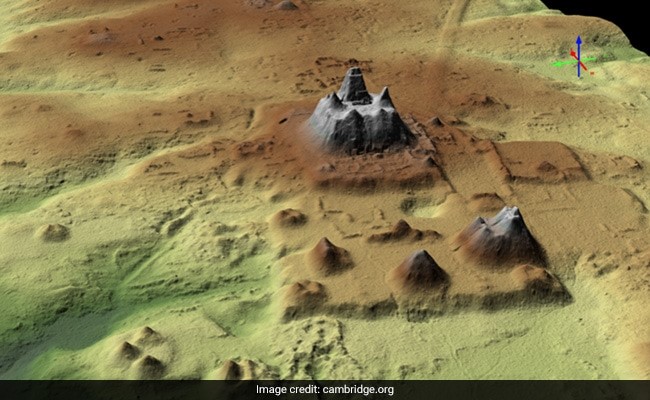Description

Disclaimer: Copyright infringement not intended.
Context: Researchers discovered the ruins of a large Mayan town buried beneath the rainforest while surveying northern Guatemala from the air.
Details:
- The region, which is close to the Mexican border and spans an enormous 650 square miles, is known as the Mirador-Calakmul Karst Basin.
- Archaeologists estimate that the city, which would have existed 2,000 years ago, would have been made up of approximately 1,000 settlements connected by 110 miles of causeways.
- The navigable causeways were 110 miles long, making it relatively easy for inhabitants of the civilisation to travel to nearby settlements.
- The discovery was made using LiDAR (light detection and ranging) by a team of researchers from several American universities as well as collaborators from France and Guatemala.
.jpeg)
LIDAR:
- LiDAR is a detection system based on laser light rather than radio waves.
- Researchers decided to use it because LiDAR can penetrate rainforests and reveal what is underneath them.
Maya Culture:
- The largest Maya cities were home to many people.
- At the major centre of Tikal, for example, within a six-square-mile area, there were over 10,000 individual structures ranging from temple-pyramids to thatched-roof huts.
- Tikal's population is estimated at up to 60,000, giving it a population density several times greater than an average city in Europe or America at the same period in history.
- A Maya city from the Classic Period usually consisted of a series of stepped platforms topped by masonry structures, ranging from great temple-pyramids and palaces to individual house mounds.
- These structures were in turn arranged around broad plazas or courtyards.
- Maya architecture is characterized by a sophisticated sense of decoration and art, expressed in bas-relief carvings and wall paintings.
- At major sites like Tikal, large buildings and complexes might also have been interconnected by stone roads or causeways.
- Maya cities were rarely laid out in neat grids, and appear to have developed in an unplanned fashion, with temples and palaces torn down and rebuilt over and over through the centuries. Because of this seemingly erratic pattern of settlement, the boundaries of Maya cities are often hard to determine.
- Temple-pyramidswere the most striking feature of a Classic Maya city. They were built from hand-cut limestone blocks and towered over all surrounding structures
- Although the temples were the most imposing structures within a Maya city, the bulk of construction at a Maya site was composed of palaces: single-storey structures built like temple-pyramids but on much lower platforms and with as many as several dozen plastered rooms.
- Unlike temple-pyramids, palaces often contained one or two interior courtyards.
- Archaeologists suggest that nobles were more likely to have lived in less permanent buildings which haven't survived.
- Archaeologists also suggest that the cell-like rooms of the palaces could indicate that monks, nuns or priests lived there, although there is little evidence of ecclesiastical or monastic orders among the ancient Maya.
- Typical Maya architectural features included the corbel vault and the roof comb.
- The Maya roof comb was a lattice of stone added despite the height of the temple-pyramids.

Guatemala:
- Guatemala is a country in Central America.
- It is bordered to the north and west by Mexico; to the northeast by Belize and the Caribbean; to the east by Honduras; to the southeast by El Salvador and to the south by the Pacific Ocean.
- With an estimated population of around 17.6 million, Guatemala is the most populous country in Central America.
- It is a representative democracy with its capital and largest city being Nueva Guatemala de la Asunción, also known as Guatemala City, the most populous city in Central America.

https://www.ndtv.com/feature/2-000-year-old-mayan-city-discovered-beneath-guatemalas-rainforest-3691356















